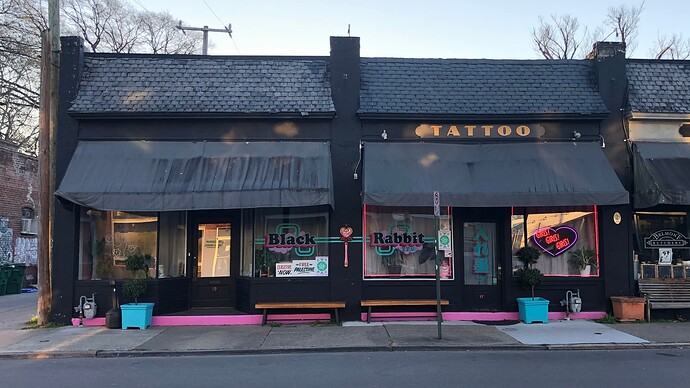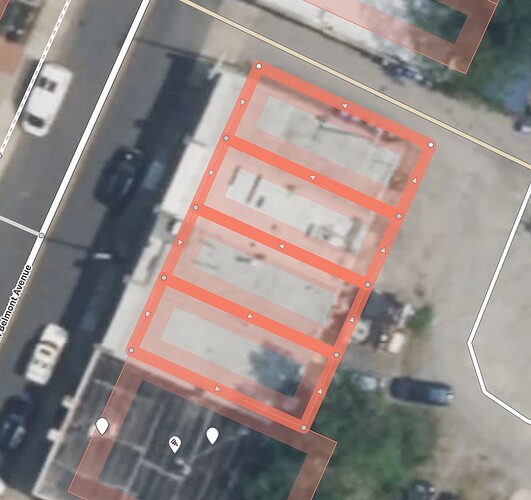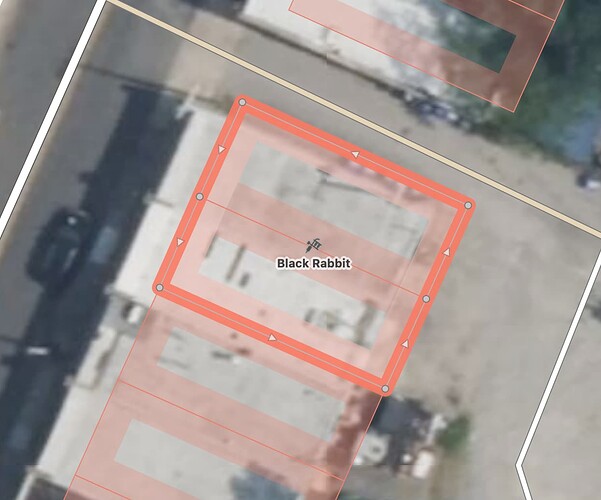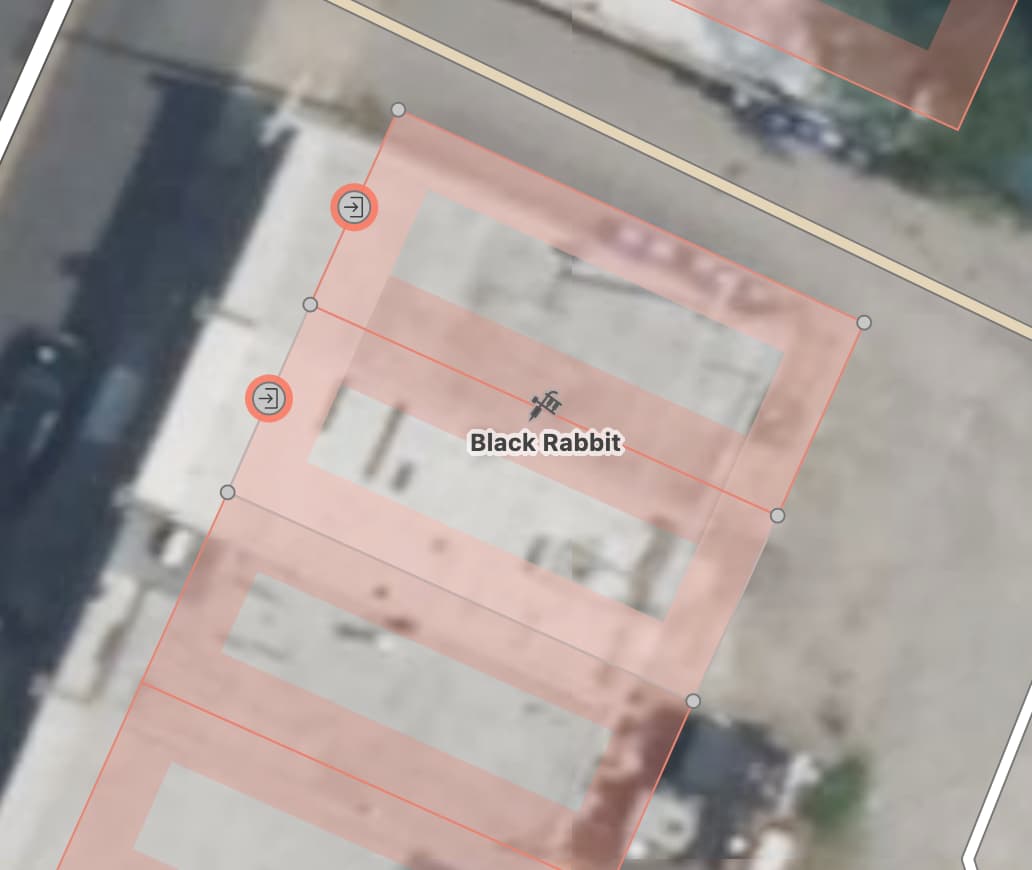The situation: In my city (Richmond, VA, USA), I’ve found two examples of shops that occupy adjacent buildings with a shared wall between them and some way for their occupants to move freely from one half of the shop to the other without going outside (through an internal door in the shared wall). Each “half” of the shop has its own street entrance with its own address, but in both cases only one of the entrances is actually used - the other is blocked off from the inside with a table or a shelf or something.
What the wiki says: While browsing the wiki and other community posts, I’ve found guidance around buildings with multiple addresses (draw the building as an area and add multiple address nodes) or multiple buildings for one house number, but how should I tag this situation where it’s technically two buildings occupied by the same shop and operating as one?
How I see it, I have two options:
- Combine the two buildings into one (delete the way that represents the shared wall) and add two address nodes.
- Keep the two buildings separate, add the shop’s tags to the main entrance, and then link the other building to it… somehow? Is this where relations come in handy? I’ve read the wiki pages on Relations and Types of Relations. The Types of Relations page links to a discussion about Clusters, but I’m just not able to wrap my head around it. (I’m still newish to OSM but have learned a lot in the last couple weeks, but haven’t dabbled with relations yet)
Examples:
- Black Rabbit Tattoo - main entrance is #17 (/way/538126477), and the adjoining building is #19 (/way/538126476). (sorry, I can’t post more than three links since I’m still new to this forum)
- Belmont Food Shop - main entrance is #27 (/way/538126472), and the adjoining building is #25 (/way/538126473).
Survey photo:
Thanks in advance for your help.



